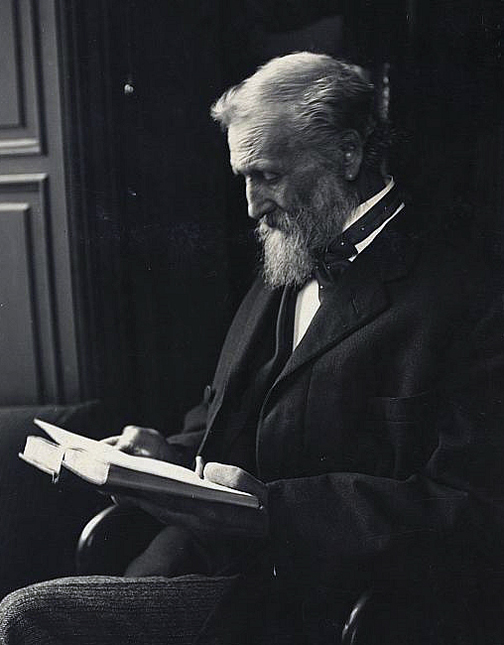John Muir – szkocko-amerykański przyrodnik, pisarz, filozof środowiska, jeden z pierwszych rzeczników ochrony dzikiej przyrody w Stanach Zjednoczonych.
Jego listy, eseje i książki opowiadające o jego przygodach w dzikich ostępach, zwłaszcza w górach Sierra Nevada w Kalifornii cieszyły się bardzo dużą popularnością i były czytane przez miliony ludzi. Jego aktywne zaangażowanie na rzecz ochrony środowiska naturalnego przyczyniło się do zachowania Yosemite Valley, Parku Narodowego Sekwoi i innych obszarów dzikiej przyrody. Założył Sierra Club – jedno z najważniejszych stowarzyszeń zaangażowanych w ochronę środowiska naturalnego w Stanach Zjednoczonych. Na jego cześć został nazwany liczący 340 km szlak turystyczny w górach Sierra Nevada . Inne miejsca nazwane na jego cześć to m.in.: Muir Woods National Monument, Muir Beach, John Muir College, Mount Muir, Camp Muir oraz lodowiec Muira. W Szkocji jego imieniem nazwano liczący 209 km szlak .
W swoim późniejszym życiu Muir większość czasu poświęcał ochronie zachodnich lasów Ameryki Północnej. Dzięki niemu do Kongresu Stanów Zjednoczonych trafił projekt przyjętej w 1890 roku ustawy tworzącej Park Narodowy Yosemite. Wyrażana w jego dziełach duchowa jakość i entuzjazm wobec natury zainspirowały czytelników, w tym kongresmenów i prezydentów, do podjęcia działań na rzecz ochrony dużych obszarów dzikiej przyrody. Życie Muira, dziś nazywanego „Ojcem Parków Narodowych” , zostało uwiecznione m.in. przez National Park Service w krótkim filmie dokumentalnym.
John Muir jest uznawany za „inspirację dla Szkotów i Amerykanów”. Jego biograf, Steven J. Holmes, uważa że Muir stał się „jednym z patronów działalności środowiskowej dwudziestowiecznej Ameryki”, zarówno politycznej jak i rekreacyjnej. Jego dzieła są często przytaczane i omawiane w książkach i czasopismach, jest również często cytowany przez fotografów przyrody, m.in. przez Ansela Adamsa. „Muir gruntownie ukształtował same kategorie, przez które Amerykanie rozumieją i wyobrażają sobie ich relację ze światem przyrody”, pisze Holmes. Muir był ekologicznym myślicielem, politycznym rzecznikiem i religijnym prorokiem, którego dzieła stały się osobistym przewodnikiem ku naturze dla wielu osób, co uczyniło go „prawie wszechobecnym” we współczesnej świadomości środowiskowej. Według autora Williama Andersona, Muir egzemplifikował „archetyp naszej jedności z ziemią”, natomiast biograf Donald Worster uważa, że misją Muira było „uratowanie amerykańskiej duszy od całkowitego poddania się materializmowi”. 21 kwietnia 2013 roku w Szkocji, w 175. rocznicę urodzin Johna Muira, po raz pierwszy obchodzono John Muir Day, oddając hołd przyrodnikowi.
Wikipedia
✵
21. Kwiecień 1838 – 24. Grudzień 1914
